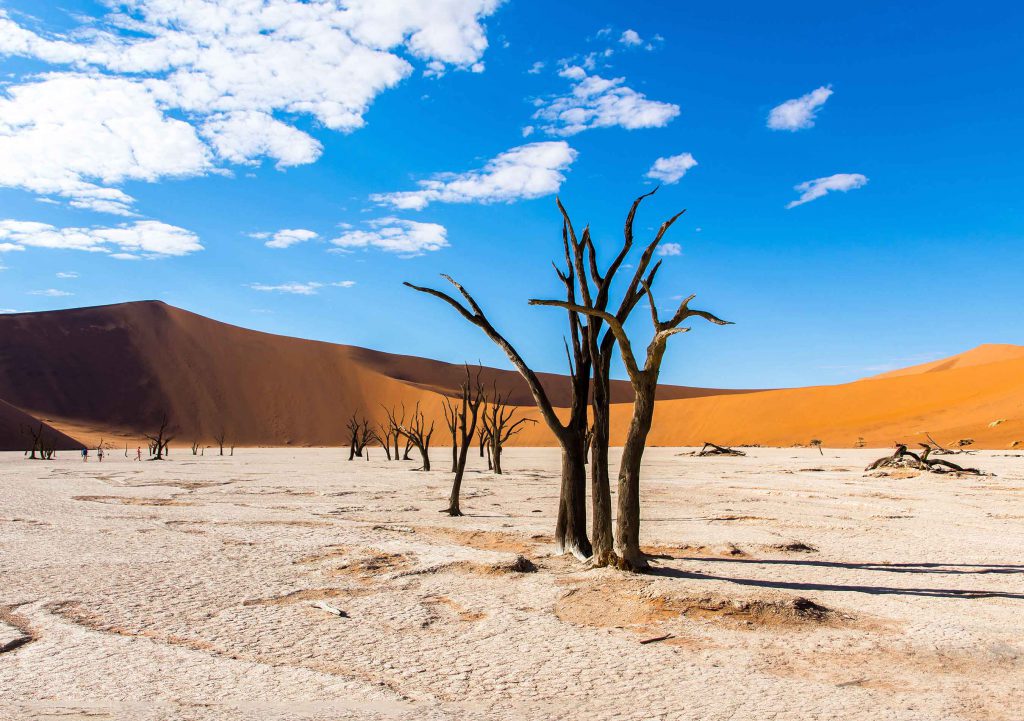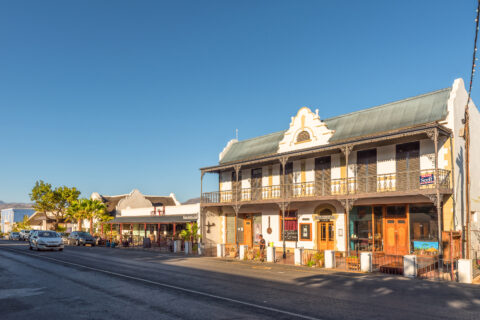Financial Mail Travel
Space And Time
From a rooftop bar in Windhoek, it’s clear that the city has shifted gear. The sun has set. There’s the rhythmic change of traffic signals, the dull glow of street lamps and the beams of headlights. The cityscape backdrop of orange-gold fading to black is mesmerising, even as the bar with its low-light pool gets busier.
I had rented a 4×4 and embarked on a round-trip with overnight stops intended as the briefest of pauses. I chose Namibia for its distance; the space and silence it offers in a world where these have become rare.
A short drive north of Windhoek brings me to Okonjima Nature Reserve where a different experience reveals itself unexpectedly. For a moment that must have been minutes in the bush, eternity is released during observation – the slow, heavy gait of a cheetah moving silently through the grass.
Upon seeing it, my reality slows, too. But not my heart, which speeds up, thrilling at the preciousness of the moment.
Days later, I’m in Etosha National Park engrossed in a similar scene. This time, the wildlife has been reduced to mere silhouettes vibrating in the heat of the 4 731 square kilometre saltpan. There is no less time-freezing detail – the smell of the air; the way the breeze moves the grass – but it’s embedded in a larger, simpler tableau of land and sky. The vehicle rolls on almost by itself. There is no sound above the crunch of tyre on gravel.
And here’s the thing about it – there’s no part that leaves you untouched if you choose to allow it. On a number of occasions during the trip, I find myself looking at the very stones beneath my feet and realise that each one holds a story beyond our years – one that pre-dates even our ancestors. I find myself locked into a dialogue with a time before time. It happens on the mountain path in Damaraland near the Huab River; and, again during a roadside stop near the aptly named Brandberg, Namibia’s highest peak.
The area where the peak rises from an otherwise hill-free landscape is harsh and inhospitable. It’s possible, here, to know what the world was like before it filled up with people – even if, a few kilometres away, lies the town of Uis, last refuge of many fortune-seekers.
This is the land of the gunslinger and the Dark Tower, I think, recalling Stephen King’s books now turned into a film; or, a stage for Isaac Asimov. Here, the sun looks bigger than it is; the lens flare has the appearance of multiple planets suspended in an oversize sky; and distant outcrops hold the promise of shelter. Danger and magnificence exist side by side. In the back of my mind I can’t help wondering how people end up here. Or why. It’s as though the desert is some sort of mystifying magnet, luring those seeking an unfettered, unadorned reality. Life here is stripped of the unnecessary, free of excess. And therein lies its magic. The road to Swakopmund through the Dorop National Park is long and unflinching; a line of white tracking the cable that undulates between telephone poles. As you near Henties Bay, it’s not unusual to have the sun disappear in the mist off the ocean.
It is surreal in the extreme, recalling Cormac McCarthy’s description in The Road: “The cold relentless circling of the intestate earth. Darkness implacable. The blind dogs of the sun in their running, the crushing black vacuum of the universe”.
I stop the car and walk into the soft sand where no tracks exist; a man on the moon. There is no sound. I close my eyes and breathe deeply.
Arrival in Swakopmund brings mixed sensations after days in the desert where new arrivals in faraway hamlets are met with interest. Here, you’re just another tourist in Tourism Central. From here, you can embark on any excursion long or short, into the desert, onto the sea or up into the sky with a parachute or simply flip over the dunes on a quadbike or attached to a modified snowboard. Strange Germanic buildings and an abundance of European products heighten the sense of being in a place that exists beyond its borders. And after the prolonged silences and epic grandeur of the nothingness outside Swakopmund, even a small town like this feels like too much, too many humans congregated in one place. The desert has spoilt me with its gift of solitude.
I swiftly stock up on supplies and head south on the road to Solitaire and a famous bakery in the desert. Again, I find myself chasing a line to the horizon in a world where time dissolves. I stop at a cross by the roadside. There’s a faded photograph and message of sadness.
By nightfall, I’m at my lodge on the border of the Namib-Naukluft National Park. Like others I passed on my way to Sossusvlei, it looks like an outpost in some distant place, perhaps Tatooine, the fictional desert planet in Star Wars.
The road home takes me on a detour at Mariental, to a space not that different to the desert. The Hardap Dam is a massive expanse, Namibia’s biggest reservoir. The smell’s different, but no less engaging.
A literary reference comes to mind, E E Cummings. He once wrote: “how fortunate are you and I, whose home is timelessness”. In this place of infinite space and endless time, that’s a truth I return to again and again.






 Sign-up and receive the Business Media MAGS newsletter OR SA Mining newsletter straight to your inbox.
Sign-up and receive the Business Media MAGS newsletter OR SA Mining newsletter straight to your inbox.